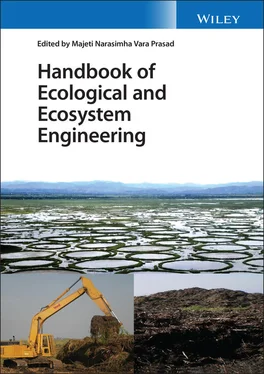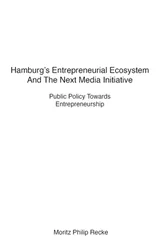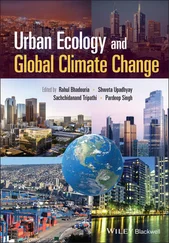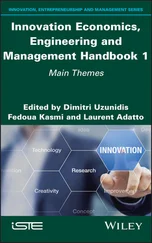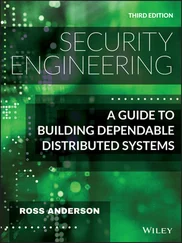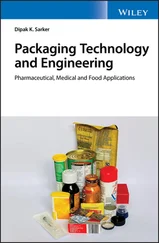4 4 Sheoran, V., Sheoran, A.S., and Poonam, P. (2008). Remediation techniques for contaminated soils. Environ. Eng. Manag. J. 7: 379–387.
5 5 Changfeng, L., Kehai, Z., Wenqiang, Q. et al. (2019). A review on heavy metals contamination in soil: effects, sources, and remediation techniques. Soil Sediment Contam. 28: 380–394.
6 6 Guo, J., Muhammad, H., Lv, X. et al. (2020). Prospects and applications of plant growth promoting rhizobacteria to mitigate soil metal contamination: a review. Chemosphere 246: 125823.
7 7 Qayyum, S., Khan, I., Meng, K. et al. (2020). A review on remediation technologies for heavy metals contaminated soil. Cent. Asian J. Environ. Sci. Technol. Innov. 1: 21–29.
8 8 Wan, X., Lei, M., and Chen, T. (2020). Review on remediation technologies for arsenic‐contaminated soil. Front. Environ. Sci. Eng. 14: 24.
9 9 Kang, S., Post, W., Wang, D. et al. (2013). Hierarchical marginal land assessment for land use planning. Land Use Policy 30: 106–113.
10 10 Terres, J.M., Hagyo, A., Wania, A. (2014). Scientific contribution on combining biophysical criteria underpinning the delineation of agricultural areas affected by specific constraints: Methodology and factsheets for plausiblecriteria combinations. In “JRC Scientific and Technical Reports”, Publications Office of the European Union, Brussels, Belgium.
11 11 Awet, T.T., Kohl, Y., Meier, F. et al. (2018). Effects of polystyrene nanoparticles on the microbiota and functional diversity of enzymes in soil. Environ. Sci. Eur. 30: 11.
12 12 Rillig, M.C., Lehmann, A., Souza‐Machado, A.A., and Yang, G. (2019). Microplastic effects on plants. New Phytol. 223: 1066–1070.
13 13 Lewandowski, I. (2015). Securing a sustainable biomass supply in a growing bioeconomy. Glob. Food Secur. 6: 34–42.
14 14 Mehemood, M.A., Ibrahim, M., Rashid, U. et al. (2016). Biomass production for bioenergy using marginal lands. Sustain. Prod. Consum. 9: 3–21.
15 15 Berisso, F.E., Schjønning, P., Keller, T. et al. (2012). Persistent effects of subsoil compaction on pore size distribution and gas transport in a loamy soil. Soil Tillage Res. 122: 42–51.
16 16 Ahmadi, S.H., Plauborg, F., Andersen, M.N. et al. (2011). Effects of irrigation strategies and soils on field grown potatoes: root distribution. Agric. Water Manag. 98: 1280–1290.
17 17 Colombi, T., Braun, S., Keller, T., and Walter, A. (2017). Artificial macropores attract crop roots and enhance plant productivity on compacted soils. Sci. Total Environ. 574: 1283–1293.
18 18 Tang, J., Zhang, J., Ren, L. et al. (2019). Diagnosis of soil contamination using microbiological indices: a review on heavy metal pollution. J. Environ. Manag. 242: 121–130.
19 19 Amuno, S., Bedos, L., Kodzhahinchev, V. et al. (2020). Comparative study of arsenic toxicosis and ocular pathology in wild muskrats (Ondatra zibethicus). and red squirrels (Tamiasciurus hudsonicus). breeding in arsenic contaminated areas of Yellowknife, Northwest Territories (Canada). Chemosphere 248: 126011.
20 20 Amuno, S., Shekh, K., Kodzhahinchev, V., and Niyogi, S. (2020). Neuropathological changes in wild muskrats (Ondatra zibethicus). and red squirrels (Tamiasciurus hudsonicus). breeding in arsenic endemic areas of Yellowknife, Northwest Territories (Canada).: arsenic and cadmium accumulation in the brain and biomarkers of oxidative stress. Sci. Total Environ. 704: 135426.
21 21 Seneviratne, M., Rajakaruna, N., Rizwan, M. et al. (2019). Heavy metal‐induced oxidative stress on seed germination and seedling development: a critical review. Environ. Geochem. Health 41: 1813–1831.
22 22 Athar, R. and Ahmad, M. (2002). Heavy metal toxicity: effect on plant growth and metal uptake by wheat, and on free living Azotobacter. Water Air Soil Pollut. 138: 165–180.
23 23 Chibuike, G.U. and Obiora, S.C. (2014). Heavy metal polluted soils: effect on plants and bioremediation methods. Appl. Environ. Soil Sci. 2014: 752708.
24 24 Hussain, S., Khaliq, A., Noor, M.A. et al. (2019). Metal toxicity and nitrogen metabolism in plants: An overview. In: Carbon and Nitrogen Cycling in Soil (eds. R. Datta, R. Meena, S. Pathan and M. Ceccherini), 221–248. Singapore: Springer.
25 25 Lemmel, F., Maunoury‐Danger, F., Fanesi, A. et al. (2019). Soil properties and multi‐pollution affect taxonomic and functional bacterial diversity in a range of French soils displaying an anthropisation gradient. Microb. Ecol. 77: 993–1013.
26 26 Wise, B.R., Roane, T.M., and Mosier, A.C. (2019). Community composition of nitrite reductase gene sequences in an acid mine drainage environment. Environ. Microbiol. 79: 562–575.
27 27 Pan, X., Zhang, S., Zhong, Q. et al. (2020). Effects of soil chemical properties and fractions of Pb, Cd, and Zn on bacterial and fungal communities. Sci. Total Environ. 715: 136904.
28 28 Jiang, R., Wang, M., Chen, W. et al. (2020). Changes in the integrated functional stability of microbial community under chemical stresses and the impacting factors in field soils. Ecol. Indic. 110: 105919.
29 29 Pandey, V.C., Bajpai, O., and Singh, N. (2016). Energy crops in sustainable phytoremediation. Renew. Sust. Energ. Rev. 54: 58–73.
30 30 McIntyre, T. (2003). Phytoremediation of heavy metals from soils. Adv. Biochem. Eng. Biotec. 78: 97–123.
31 31 Dale, V.H., Kline, K.L., Buford, M.A. et al. (2016). Incorporating bioenergy into sustainable designs. Renew. Sust. Energ. Rev. 56: 1158–1171.
32 32 Oliveira, J.S., Duarte, M.P., Christian, D.G. et al. (2001). Environmental aspects of Miscanthus production. In: Miscanthus for Energy and Fibre (eds. M.B. Jones and M. Walsh), 172–178. London, UK: James & James (Science Publishers). Ltd.
33 33 Fernando, A.L., Godovikova, V., and Oliveira, J.F.S. (2004). Miscanthus x giganteus: contribution to a sustainable agriculture of a future/present – oriented biomaterial. Mater. Sci. Forum 455–456: 437–441.
34 34 Fernando, A.L. (2013). Environmental aspects of Kenaf production and use. In: Kenaf: A Multi‐Purpose Crop for Several Industrial Applications, vol. 117 (eds. A. Monti and E. Alexopoulou) Green Energy and Technology, 83–104. London: Springer.
35 35 Alexopoulou, E., Cosentino, S.L., Danalatos, N. et al. (2013). New insights from the BIOKENAF project. In: Kenaf: A Multi‐Purpose Crop for Several Industrial Applications, vol. 117 (eds. A. Monti and E. Alexopoulou), Green Energy and Technology, 177–203. London: Springer.
36 36 Fernando, A.L., Costa, J., Barbosa, B. et al. (2018). Environmental impact assessment of perennial crops cultivation on marginal soils in the Mediterranean region. Biomass Bioenergy 111: 174–186.
37 37 Abdelsalam, I.M., Elshobary, M., Eladawy, M.M., and Nagah, M. (2019). Utilization of multi‐tasking non‐edible plants for phytoremediation and bioenergy source – a review. Phyton‐Int. J. Exp. Bot. 88: 69–90.
38 38 Chen, X., Kumari, D., Cao, C.J. et al. (2019). A review on remediation technologies for nickel contaminated soil. Hum. Ecol. Risk. Assess. 26: 571–585.
39 39 Kumar, V. and Kumar, P. (2019). A review on feasibility of phytoremediation technology for heavy metals removal. Arch. Agric. Environ. Sci. 4: 326–341.
40 40 Naila, A., Meerdink, G., Jayasena, V. et al. (2019). A review on global metal accumulators – mechanism, enhancement, commercial application, and research trend. Environ. Sci. Pollut. Res. 26: 26449–26471.
41 41 Barbosa, B., Costa, J., Boléo, S. et al. (2016). Phytoremediation of inorganic compounds. In: Electrokinetics Across Disciplines and Continents – New Strategies for Sustainable Development (eds. A.B. Ribeiro, E.P. Mateus and N. Couto), 373–400. Switzerland: Springer International Publishing.
42 42 Testa, R., Foderà, M., Di Trapani, A.M. et al. (2016). Giant reed as energy crop for Southern Italy: An economic feasibility study. Renew. Sust. Energ. Rev. 58: 558–564.
Читать дальше
